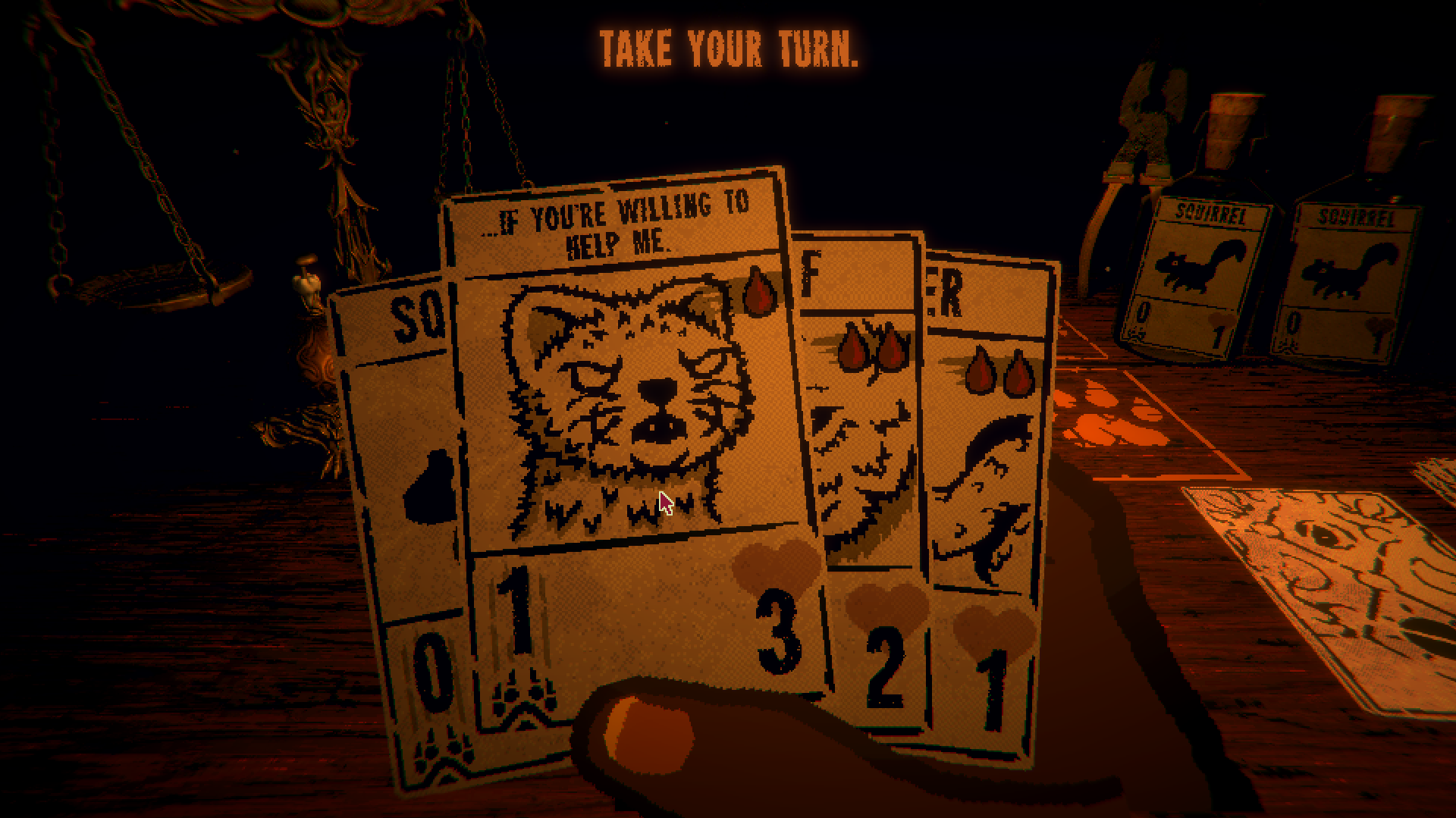Breaking Kaycee’s Mod: A Look at Inscryption’s Next Phase
What it is, where it falls short, and how to absolutely destroy it

I’ve clocked in over 200 hours on Slay the Spire since I picked it up three years ago. That’s enough time to have beaten the game just about every way you can. Suffice it to say, I’m a fan, and it’s been pleasing to see how many teams are trying to build on Mega Crit’s original concept.

Owing to this, the announcement of Kaycee’s Mod for Inscryption caught my attention right away. This alternative mode — still in beta as of this writing — turns the first act into an endless Slay the Spire-like challenge with various unlockables.
So how does it look so far? Well…shaky.
First, the basics: Each Kaycee’s Mod run starts with the player receiving a starter deck consisting of three predetermined cards and two hare pelts (sometimes, one of the pelts is replaced with another card; I’m not sure what causes this — EDIT: It seems like this happens when one dies or restarts a run before reaching the first boss, a la Neow giving fewer boons in Slay the Spire), which can be immediately swapped as the first square is always a Trader. The player then proceeds through a series of randomized maps, each ending with a boss. The first three bosses appear in random order, with the last of the three getting some covert bonuses to make it a harder fight; the fourth boss is always the Act 1 final boss.
But wait, there’s more. At the start of each run, the player is invited to take on voluntary challenges in what is essentially a customizable version of Slay the Spire’s Ascension mode. Clear a run with enough of these challenges active, and the player will be rewarded with various unlockables, including new cards (some with brand new sigils), new starter decks, new challenges, and — the big draw — story files. Given the sizable number of loose threads in Inscryption, the allure of more details about the story is hard to pass up.
Beyond that, the game plays out just like vanilla Inscryption. You can even step back from the table and walk around the cabin just like in the first act of the standard game, though all of the puzzles are either nonfunctional or offer no rewards.

The developers promised upfront that Kaycee’s Mod was going to be a rough experience while in beta, and boy is it ever. I’ve put in a little over 10 hours on Kaycee’s mod, and that’s enough time to pin down two major problems that make it such a hassle to play:
- There’s no way to refuse an offer when you land on a square. In Slay the Spire, you usually have the option to refuse to draw a card. This is critically important — there is a strong element of luck in games like this, and the only real way to reduce the risk of a bad draw is to keep your deck as lean as possible. But in Inscryption, the event in each square is mandatory; there’s no way to skip a draw (or a discard, for that matter). There are ways around this with clever play, but…
- There’s no way to plan a route. In Slay the Spire, the entire map is visible as soon as it’s generated. This grants an opportunity to plot out a route from start to finish. It might not be ideal — often you’re picking the best from a series of bad choices — but it allows for long-term planning. Inscryption only lets the player see three or four steps ahead, which means that there’s often no way to know what’s going to come at the end of a path and therefore no real way to plan things out.
It’s certainly possible that one or both of these will be addressed by the time that Kaycee’s Mod is officially live, in which case this will be a real treat for everyone who’s become a fan of deck builder games in the last few years. However, I’m not one to wait around for things like that. Any system can be broken, and in my limited time with the beta, I’ve figured out a few strategies to sidestep the game’s current limitations.

Andrew’s Strategy Corner
As I said above, the key to games like this is controlling the size of your deck. This means knowing all the ways to deplete your deck of unwanted cards and how to avoid pulling cards you don’t want. Here’s how you might go about doing that in Inscryption:
- Campfires. Many of you probably know that there is a way to poison the people at the campfire, allowing you to power up your cards without risk of losing them. However, if you leave things status quo, you can use campfires as an unreliable means of depleting your deck. Each time you encounter one, offer up your worst card, then power it up twice. Best case, that card goes away; worst case, it becomes more powerful and therefore less useless.
- Trials. Of all the card draw squares, the trial is the only one where you don’t automatically get a card — you have to win a minigame first. But who says you have to play to win? If your deck is looking good, try to land on these squares, then intentionally pick a trial that you are likely to lose.
- The Trapper. This one’s obvious, but it bears mentioning: You only need to take a single pelt, even if you can afford to buy more. If you don’t need anything else in your deck, just take the mandatory hare pelt and move on.
- The Mycologists. This is a tricky square, as it can either shrink or grow your deck depending on whether or not you have any duplicate cards. To avoid a forced draw, always keep at least one matched pair on hand. Note that the game can generate multiple Mycologist squares in a row, so if you see that coming, you can plan for it and either look for more duplicates or avoid duplicates to keep your deck the same size — getting a card at the first tile and sacrificing it at the second.

An alternative strategy
As I was playing through the game, I landed upon an alternative that makes the need to manage your deck size less critical. Even with a bloated deck, you’ll never have a bad draw. It’s very simple: Fill your deck with creatures that cost no more than one blood to play. This means that you’ll be able to do something every turn no matter what you have.
The key here is to take those weak little creatures and power them up. Use the Trapper and Trader to get lots of doubles and never even take a more expensive creature from a draw unless it has a really good sigil that you want to transfer to another creature. Take paths that give you plenty of campfires (poisoning the campers if you wish) and Mycologist squares. With luck, you can end up with cheap powerhouses that can end many matches in a single round.
